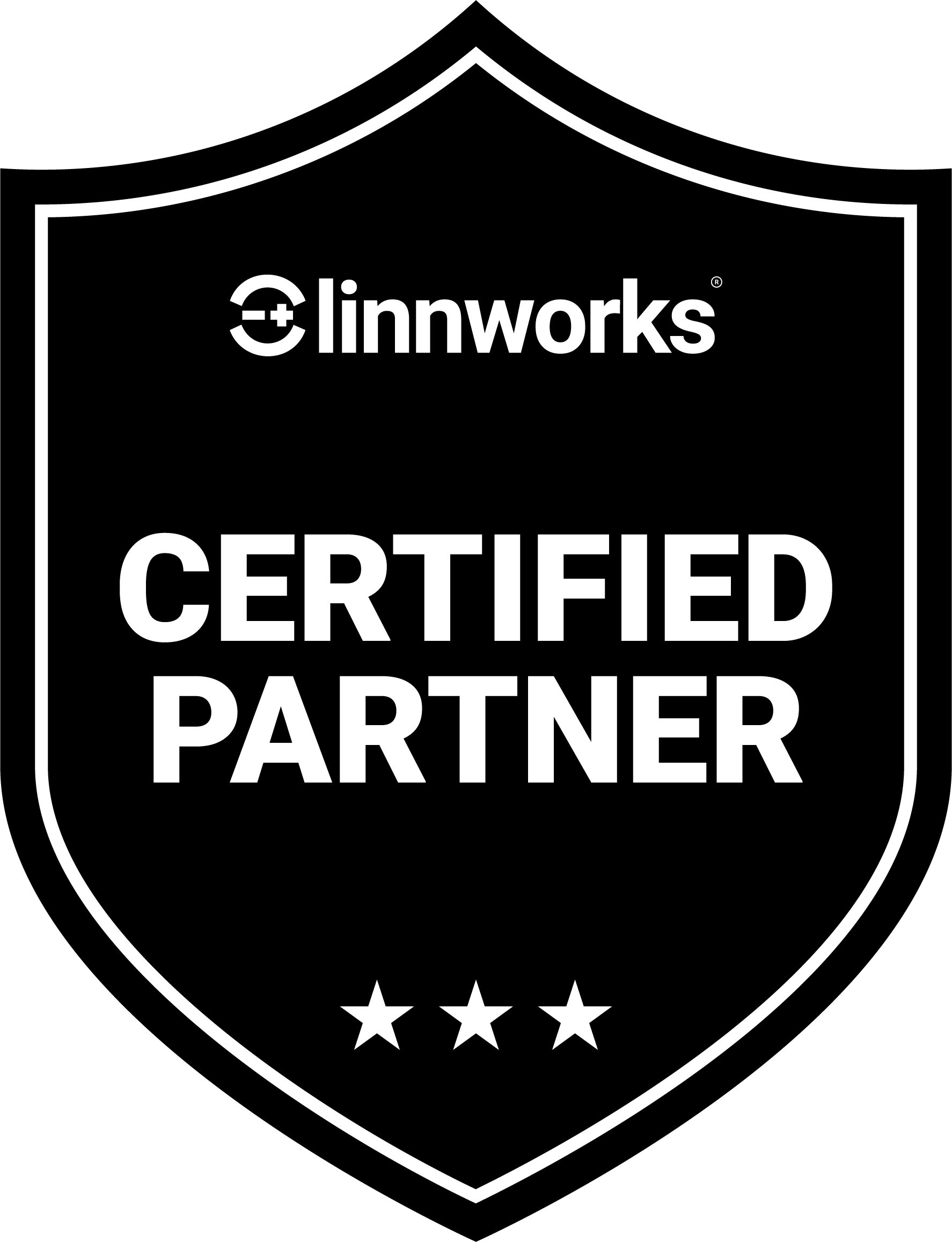9 February 2024
How to digitize your business with a cloud-based application? Here’s everything you need to know
Gain a fresh perspective on upgrading your software—here’s how to modernize your IT infrastructure through cloud migration.

Solutions
Author

Romanna Pastyrska
WriterMany businesses choose cloud migration as this solution has proven to provide greater flexibility for companies and their clients.
Before deciding to move to a cloud-based application, take your time to consider the pitfalls and ensure you don’t waste additional funds on supplying platforms that do not serve your business.
We’ve prepared this guide to help you understand what cloud-based apps are, why you should consider migrating to the cloud, and how to implement it. Read on!
What is a cloud application?
For non-techies out there, the “cloud” might be an intimidating and vague concept. We discuss moving apps into the cloud, but what exactly does it mean?
A cloud application is an internet-based program where some, or all, of the processing logic is stored on the internet, metaphorically called “the cloud.”
From the user’s perspective, a cloud-based app is just like a standard website, but the computing and data processing is handled by the cloud via an application program interface (API) or a hybrid.
Cloud application services can be divided into three major categories:

Software as a Service (SaaS)
SaaS is a third-party cloud-based service that allows you to access an application via an internet browser. In this case, the third party supplies the hardware for running the application and the software application itself. Moreover, they provide full support for the systems and the application.
Chances are, you’re already using some basic examples every day: Google Drive, Google Docs, Shopify, Mailchimp, and many others.
Infrastructure as a Service (IaaS)
IaaS is an instant computing infrastructure that is managed over the internet. This infrastructure helps you avoid the expenses associated with buying and managing your own physical servers. You can rent the resource for as long as you need as everything is offered as a separate service component. Businesses use IaaS for various business needs, including:
- Test and development
- Website hosting
- Storage, backup, and recovery
- Web apps
- High-performance computing
- Big data analysis
Some of the commonly used IaaS examples include Google Cloud, Amazon Web Services, and Microsoft Azure.
Platform as a Service (PaaS)
Platform as a Service, or PaaS, is a complete development and deployment environment in the cloud. It has the ability to deliver everything from simple cloud-based apps to sophisticated, cloud-enabled enterprise applications.
The PaaS provides the complete application lifecycle, including building, testing, deploying, managing, and updating. Besides the infrastructure, that makes PaaS similar to IaaS, the digital environment also includes:
- Middleware
- Development tools
- Business intelligence services
- Database management systems.
Here are the examples of PaaS solutions: AWS Elastic Beanstalk, Force.com, Google App Engine, and OpenShift.
What are the types of cloud-based solutions by access?
When enterprise data is available via the internet, there are always questions about data security and access. By the type of access, all modern cloud deployment models are divided into four types: private, community, public, and hybrid.
Private cloud solutions
Contrasting the public park, private cloud solutions are like a gated community. They offer exclusive, dedicated resources to a single organization. This access type ensures heightened security and control over data, making it a preferred choice for industries with strict compliance regulations.
Community cloud solutions
Community clouds serve specific groups or industries that share common concerns, such as regulatory requirements or security standards. These clouds allow collaboration among multiple organizations, sharing resources to address their common needs efficiently.
The flexibility of cloud-based solutions lies not only in their services but also in the diverse ways they can be accessed. Understanding the different access types enables businesses to select the most suitable cloud solution to meet their specific requirements and align with their goals.
Public cloud services
Public cloud solutions are like the city’s central park, offering access to anyone. They provide shared resources, applications, and services via the internet, making them a cost-effective choice for businesses. With scalability and broad accessibility, this access type suits businesses of various sizes.
Hybrid cloud solutions
Hybrid cloud solutions blend the public and private models, offering a combination of shared and dedicated resources. This approach allows companies to keep sensitive data secure while leveraging the scalability and cost-efficiency of public cloud services.
Need cloud-based application development?
Create cloud-based software together with Brainence experts. Our services include business analysis, architecture, UI/UX design, software development, QA, deployment, and support.

What are the tools for building cloud-based applications?
Amazon Web Services (AWS)
This service helps you automate your application deployment. AWS designed over 140 services that have numerous benefits. AWS offers highly secure data, applications, videos, and APIs for cloud-based development and can integrate your location using the AWS global infrastructure.
Microsoft Azure
MA can become a reliable alternative for your cloud-based app development. It is recognized as the fastest-growing cloud infrastructure platform nowadays. Developers can benefit from hybrid cloud capabilities and provide relevant services to businesses around the world. If you are looking for a cost-competitive, flexible tool with big data insights and simple data storage, you should check the Azure services.
Google Cloud
Another popular cloud platform that can become an alternative to the services we previously discussed. Google Cloud is a set of servers, virtual machines, data analysis services, and more. With this set of instruments, developers can quickly deploy, run, and monitor their products with no corporate data servers. The primary benefits of the Google Cloud include fast deployment, simplicity, and cost-efficiency.
DigitalOcean
The company provides a reliable platform with predictable pricing and top-class services that allow building and deploying cloud-based applications easily and effectively. The platform is certified on multiple international standards, which ensures the safety of its users.
What is the architecture of cloud-based apps?
Data architecture is an integral part of any development process. When we talk about cloud application development, it requires an advanced understanding of data architecture. We prepared five steps to help you build a cloud-ready application architecture.
Design the application as a collection of services
The difference between regular and web development is that a cloud-based application operates as a collection of interconnected services (APIs). This means that you should understand how to connect the cloud services to receive the most beneficial results.
When developing an application architecture for the cloud, you deal with complex distributed systems. Developers should not create tightly coupled applications that focus on user interface rather than expose the underlying functions as services they can leverage independently.
Decouple the data
Private and public clouds are complex distributed systems that work best with application architectures that break out processing and data into separate components. Once you decouple the data, you can store and process it on any private or public cloud instance.
Consider communications between application components
Decoupling applications is not enough as it does not ensure your application is properly architectured for the cloud. Focus on designing an application that optimizes communication between application components.
Model and design for performance and scaling
In order to create a successful cloud-based application, you should consider overall performance. One of the major parts is understanding how the application will scale under an increasing load and it should be considered when building an architecture for an app.
Make security systemic within the application
When hosting an application in the cloud, security should be a priority. The security should be designed and built into the application architecture. You can pick an approach that works better for your business. For instance, the healthcare segment must consider protecting personal information and have all the systems HIPAA compliant.
Looking to develop a cloud app?
Contact us, and we’ll consult you on the best cloud app solutions matching your business needs.

Step-by-step guide for your cloud-based application development
Once you decide to move forward with cloud app development, follow the steps below.

Discovery and goal definition
Your cloud-based app development kicks off with the discovery phase. Conduct thorough research on your market, users, and competitors. Choose the kind of cloud platform we discussed above: IaaS, PaaS, or SaaS.
By the end of the discovery stage, you also need to have a clear understanding of the project scope, timeline, and budget and ensure well-defined project goals.
Hiring the team
Cloud application development requires long-term collaboration. Therefore, hiring freelancers might not be the best choice for successful outcomes. We recommend building an in-house team, partnering with an outsourcing company, or hiring a dedicated team.
In-house experts
If you decide to hire in-house, you’ll have control over the whole development process. However, this is the most costly option as, in addition to salaries, you’ll need to cover expenses like office space, software, taxes, etc.
Outsourced partner
Partnering with an outsourcing company is an optimal choice. Why? Cloud-based app development demands a sophisticated approach. When selecting an outsourcing partner, look for companies that can demonstrate their expertise in cloud-based app development and possess a pool of skilled professionals, including engineers, architects, project managers, designers, and QAs.
Dedicated team
Brainence can help you build a dedicated team from scratch or augment your existing one with the necessary talents. We’ll manage the development process and handle administrative and legal matters, allowing you to focus on your fundamental business objectives.
Strategy development
In this phase, strategize the roadmap for your app. Establish the app’s architecture, select the technology stack, and plan the transition to the cloud. Identify key functionalities and technical requirements, aligning them with your chosen cloud platform, application specifications, features, design considerations, and scalability objectives.
User experience and interface design
The design process starts at the discovery stage, where we conduct market research, interview users to understand their needs and pain points, and analyze competitors to identify areas for improvement. The research results guide our designers in crafting a design that’s not just user-friendly but also genuinely engaging.
We also put every design solution to the test with real users. You can rest assured that your app is not just good-looking but first of all, it truly meets the needs of the people using it.
Development and testing
Finally, all the work from the earlier stages transitions into the actual creation of your cloud-based application. Developers write code, bringing the architecture, chosen technology stack, and design elements to life.
Before your app steps into the spotlight, it undergoes a thorough examination — that’s the purpose of testing. This way, we can guarantee functionality and security, and address any issues identified during testing.
Release, maintenance, and ongoing support
Last but certainly not least on our agenda: the launch is just the beginning. Post-release, maintain and support the app, and implement improvements. Promote your app and listen to user feedback to keep your app thriving.
What challenges might you face with cloud-based application development?
Once you decide to implement a cloud-based software solution, you can choose between two solutions:
- Make your company a cloud provider (SaaS, IaaS, PaaS). If you choose this development scenario, be prepared for the numerous challenges you will have to overcome.
- Build an app based on third-party cloud solutions. In this case, think about integration and choose your provider carefully. When choosing a service, ensure you find a reliable company that can build an easy-to-use interface that provides scalability for further business development.
Forewarned is forearmed! Let’s go over specific challenges you may face during the stages of cloud-based app development:

Security and data privacy
Developers are still figuring out how to provide full client-side security. As safety is one of the most significant concerns among modern users, you should consider it when deciding on cloud-based application development. Cloud-based applications should have strong data encryption, SSL, and reverse proxy usage to raise the security of your app.
Scalability
Your cloud-based app is more likely to fail if you cannot scale it. Scaling leads to the growth of your business and exposes you to a bigger audience. When looking for a third-party service, ensure they consider scaling when developing a cloud-based application.
Performance
Ensuring your customers are satisfied with their app experience is one of the major things you should consider when choosing a cloud-based application framework. You should be able to provide users with the same page loading speed wherever they are.
Reliability
Every service your customer receives has to work flawlessly on their side. This means that the framework you use should maintain all the important processes to ensure your customers benefit from the tool.
Create your cloud-based app with Brainence
Cloud-based applications offer advantages but demand careful planning. Make sure you choose the right tools, design a solid architecture, and follow a structured process for success.
Partnering with an experienced software development company is half of your success. So, if you’re looking to develop a cloud-based application, Brainence is here for you.
With over 7 years of experience in custom software development, our experts possess the skills and expertise to bring your cloud app to life.
Contact us to grow your business with a cloud-based app.
Contact us

The most impressive for me was the ability of the team to provide first-class development and meet all the deadlines.

The team proactively comes up with solutions and is eager to deliver high-quality development support.

I was blown away by the knowledge that Brainence has about web app development, UX and optimisation.

